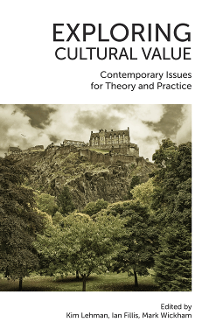
Lab Adelaide’s Julian Meyrick and Tully Barnett have contributed a chapter to a book exploring new ways of recording and reporting the value of arts and culture: Exploring Cultural Value: Contemporary Issues for Theory and Practice.
Dr Meyrick and Dr Barnett’s chapter, ‘From Cultural Value to Culture’s Value: The Part-to-Whole Relationship in Assessments’, argues that arts and culture are more than the sum of their parts, and that dividing the value of a cultural activity into discrete dimensions risks losing sight of its overall purpose, scope and place in the world. To explore this issue, they use a case study of a stage play from South Australia, Mi:Wi 3027.
The chapter was published on 25 January 2021, and can be accessed online: https://www.emerald.com/insight/content/doi/10.1108/978-1-78973-515-420211004/full/html
Read the full abstract below:
In this chapter, we consider dominant arguments for the ‘disaggregation’ of the value of culture into discrete dimensions – economic, social, environmental, heritage and cultural and so forth – and their separate measurement. We discuss the role of proxies in assessment processes (‘parts’) and their relationship to the cultural experiences (‘wholes’) for which they are taken to be representative indicators. Disaggregation encourages a divisible approach to cultural activities that, at their heart, present as non-divisible experiences. Thus, we should speak of ‘culture’s value’ as opposed to ‘cultural value’ as a way of highlighting a crucial methodological point – that arts and culture are more than the sum of their parts and that the assessment of a particular cultural activity must consider not only the benefits returned by its separate dimensions but also the activity’s overall purpose, scope and place in the world. These non-divisible, often non-measurable, contextual features should not be considered contingent externalities but as sense-providing parameters that give meaning to any numerical data whatsoever. We conclude by looking at the issue via an example of a recent stage play from South Australia, Mi:Wi 3027 written by Ngarrindjeri playwright Glenn Shea and commissioned by Country Arts South Australia. The values of the drama cannot be and should not be distinguished from its value, and assessment processes must therefore look to frame the primary cultural experience it embodies in ways that make sense of its purpose, scope and place in the world.
